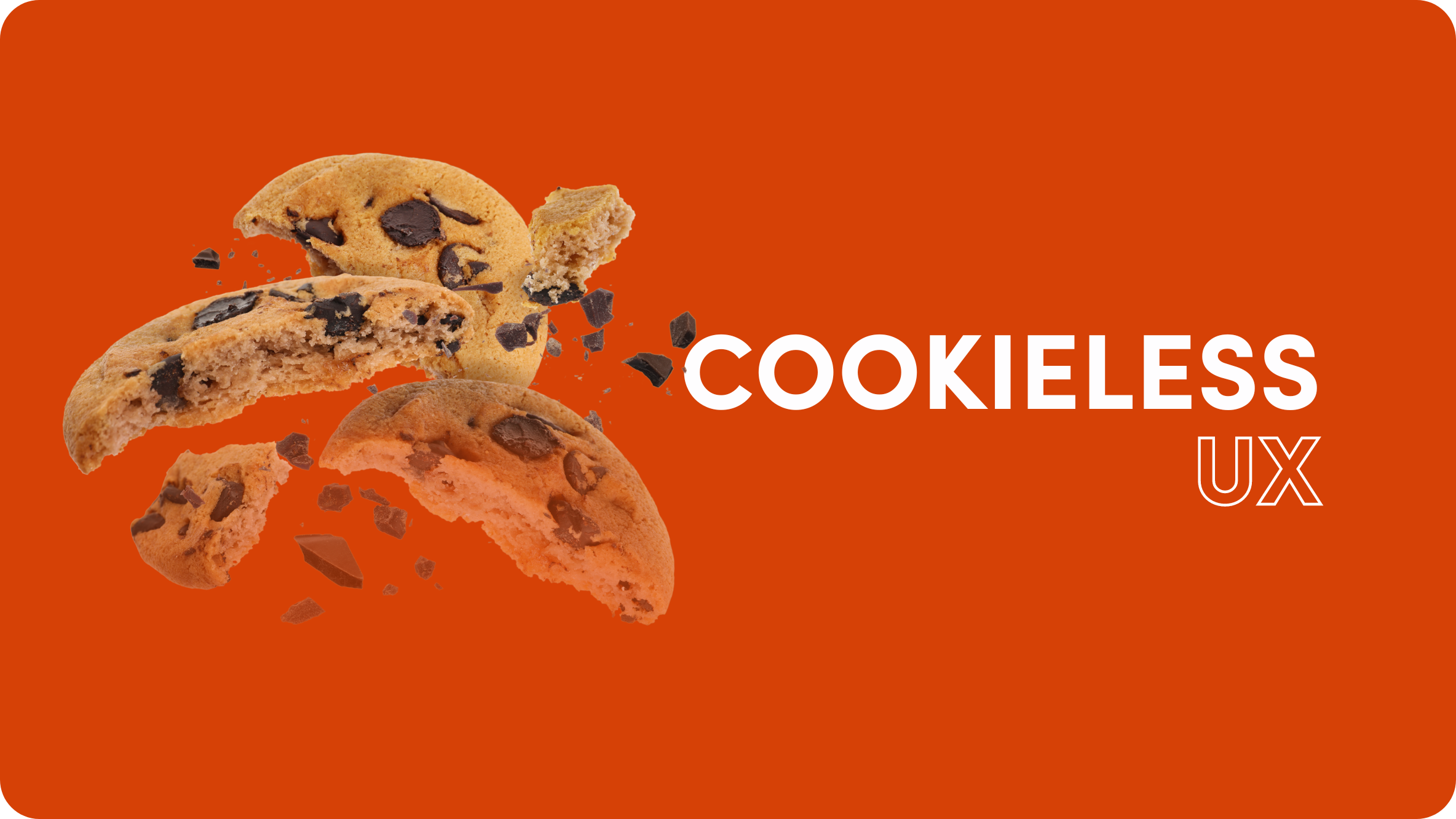Health & Wellness Advertising: Trends to Follow in 2024
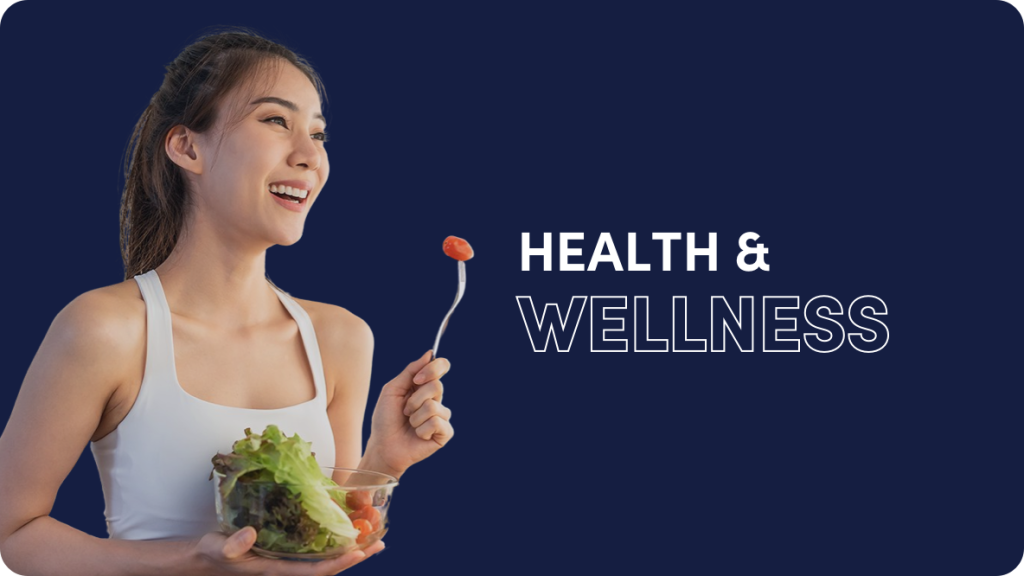
In 2023, customers were more aware than ever of the impact their lifestyles have on their health and wellbeing. We all want to look young, feel good, and stay in shape for as long as possible. That desire is reflected in the rapid growth of the wellness industry.
According to data published by the global wellness institute, the global wellness economy was valued at $4.9 trillion in 2019. Despite a small decrease to $4.4 trillion in 2020, it’s still projected to reach $7 trillion in 2025.
Considering the growth, it’s no surprise that advertising spend in the health and wellness industry hit $900 million in Q4 of 2021 alone.
But, even though advertisers spend more than ever on health and wellness ads, it’s harder than ever to encourage customers to click and convert. Why?
The Health and Wellness Landscape Shift
First, there’s competition. New players enter the market almost every day, and established brands keep adjusting their offers to the changing customer expectations and market trends.
Then, there are the customers themselves. In today’s rapidly-changing advertising world, they have easier access to health education and information than ever before. As a result, they are more aware of and particular about their needs, how to meet them, and what can benefit their health and wellness the most.
They no longer pay attention to ads for brands they don’t trust, products that overpromise and underdeliver, or that are not aligned with their values.
Because of all that, many previously effective advertising tactics no longer work like they used to. But, that doesn’t mean there’s no way to grow a health and wellness business with advertising in 2023. Here are the advertising and marketing trends to follow in 2023 and beyond if you want your wellness brand to stand out and attract loyal customers.
Health & Wellness Advertising & Marketing Trends
1. Create immersive experiences with experiential marketing
Experiential marketing is all about engaging with your customers using branded experiences. It goes beyond traditional advertising and strives to create memorable experiences and deepen the connection between the consumer and the brand even before they become customers.
A great example of a brand that took the experiential marketing strategy to a whole new level is Peloton. This at-home fitness brand offering stationary bikes allows customers to test their bikes during live classes in showrooms in malls in major cities.
The “take Peloton for a test drive” experience turned out to be a huge success and the brand quickly went viral (and skyrocketed its sales).
Then, if you became a customer and wanted to train at home but still engage with others, the company created live-streamed and on-demand classes, which in turn created a strong sense of community around the brand.
Over time, the company introduced other classes to their community, from Yoga to Strength and even running training:

And while the company took a slight hit post-pandemic once gyms reopened, it’s still one of the best examples of experiential marketing that turned into a viral phenomenon.
2. Emphasize the unique health benefits of your offer
Next, you want to emphasize the health benefits of your product or service. Not its features or ingredients or how it’s going to change people’s appearance. You don’t want to talk all about your brand or its achievements either.
Sure, you may have millions of sales or be the fastest-growing health brand. But how does that benefit your customers? It doesn’t. And frankly, they don’t really care.
And while looks are important, they’re not the main reason why people spend money on health and wellness products in 2023. So, how do you reach customers in the niche?
Tell them about what’s in it for THEM. And, more specifically, emphasize the health benefits of your offer. How does it benefit their body and mind?
A great example of this approach is a supplement company Athletic Greens. They offer an all-in-one nutritional powder and their entire message is focused on its health benefits. To encourage people to choose their product, they break down exactly how their blend of vitamins, minerals, and whole-foods ingredients contribute to key improvements in one’s health, in areas such as:
- Energy
- Immunity
- Gut Health
- Recovery
And, as their message in the hero section powerfully emphasizes – all those benefits are available in just one scoop of their product:
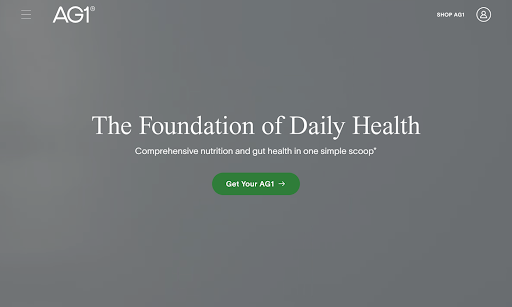
3. Leverage social impact marketing
Consumers are becoming more socially conscious – and they want brands that they choose to align with their values. That’s a good reason why more and more brands engage in initiatives that aim to improve societal health and wellbeing.
This can be anything from campaigning to generate awareness about mental health issues to influencing healthier consumer behaviors and contributing positively to the community. Interestingly, the initiatives don’t necessarily have to focus on health and wellness topics.
A great example of a brand that’s working hard to generate health awareness is Novo Nordisk. This global healthcare company and one of the leaders in diabetes care runs the “Changing Diabetes” initiative, which aims to promote awareness, education, and improved care for diabetes.
In their advertising, they talk a lot about the importance of helping through disease prevention.
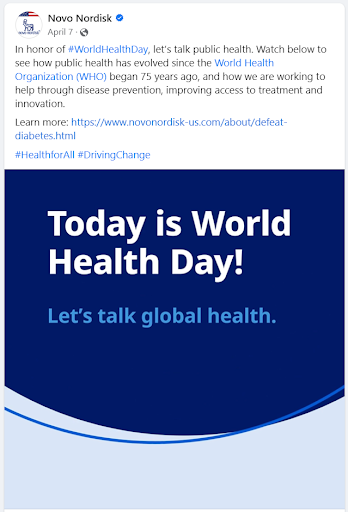
Of course, you can achieve much success engaging in other social and environmental causes as well. The key is to genuinely contribute to the community and demonstrate your brand’s commitment to social responsibility.
4. Personalize your message (with the help of AI)
AI is one of the hottest topics of 2023. Its proper use in your workflow can give your brand a huge competitive advantage. And while many tools already incorporate artificial intelligence to help users get the most out of their data (for example, Fitbit, Lumen, or 23andMe), it’s also possible to use AI in top-of-the-funnel marketing.
An excellent example of the use of AI in marketing is an AI-powered product recommendation system – just like the one implemented by Olay. The brand’s skincare AI tool, Olay Skin Advisor, leverages artificial intelligence to analyze users’ selfies and provide personalized product recommendations.
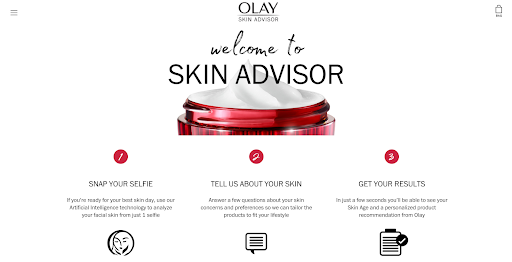
The tool doesn’t just make the company stand out but also helps users choose the right product. This, in turn, increases conversion rate and customer loyalty (thanks to better results achieved with their products.)
5. Engage your audience with interactive content
Blog posts are great to educate your audience but they should never be the only type of content that you create. To stand out from the crowd and keep your audience engaged, you want to mix it up with interactive content too. Popular (and effective) forms you can use include quizzes, polls, surveys, games, and competitions.
An excellent example of the use of engaging interactive content in their marketing funnel is that of Holland & Barrett. This multinational health food shops chain with over 1,300 stores is investing heavily in its online presence.
Their quizzes (they use them a lot) are a way to give customers personalized recommendations and guide them to the right products while providing a fun, interesting, and immersive experience. And, what’s important, they help them make better health choices.
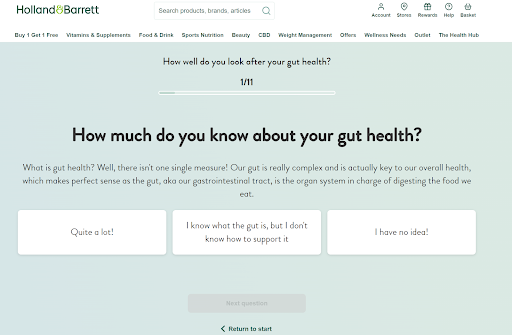
6. Build a community around your brand
A community can be an excellent way to build brand loyalty and foster a sense of belonging and support. And it doesn’t matter if the community is online (forums, social media groups, online events), offline (in-person events), or a mix of those. The key is to allow customers to connect, share their experiences, get support, and exchange feedback
Some brands take the community thing one step further and make it one of the core elements of both their marketing and the offer itself.
A great example of this approach is WeightWatchers. The company leverages its community to build a sense of belonging and encourage people to share tips and recipes and support one another while overcoming challenges.

On top of running an exclusive social network, they host weekly in-person and virtual meetings where members can share their experiences and give each other support. That support significantly increases their chance of success, especially compared to just using a weight loss app.
7. Create educational content for your audience
Consumers in the health and wellness industry are more aware of their needs than ever before. They also understand the importance of doing proper research, seeking content that can help them make more informed decisions about their health.
Unfortunately, many companies don’t understand how to create truly valuable content and stick to generic topics. Most educate consumers on how to lead a fit and healthy lifestyle. But most people already know that. They’ve seen that type of content a dozen times.
If you want to succeed in 2023, you’ve got to go more in-depth.
This approach is evident, particularly in the content marketing of supplement brands. Rather than repeating the well-known facts, they focus on explaining the impact of vitamins and minerals offered in their product on one’s health and wellbeing.
The key is to use the content to both educate the audience and help them get the most out of your product or service (and encourage them to make a purchase).
Of course, the more “complex” your product, the more content you might need to explain it. A great example of educational content done right is that of 23AndMe. This personal genomics and biotechnology company offers its audience genetic health testing.
Because their service is quite complex, they created a “Genetics Learning Hub”, containing a wealth of educational resources to help their audience understand their genetic data and its implications.
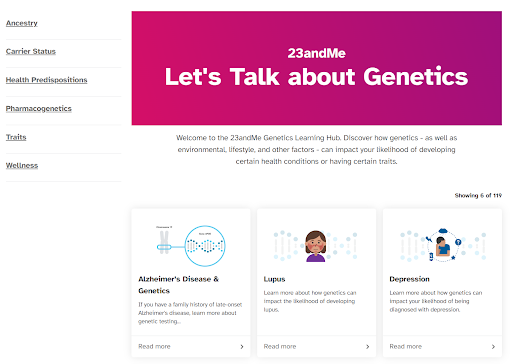
8. Partner with diverse influencers in different micro-niches
Next, don’t forget about influencer marketing. Many marketers hesitate when they hear about influencer marketing fearing huge budgets. But the reality is, influencer marketing can not only be affordable but also highly targeted. The key to success? Leverage diverse influencers in micro-niches.
Remember that it’s better to be in front of a couple thousand targeted people than millions who are not interested in what you have to offer. By partnering with a small but highly engaged audience, you can reach a diverse group of people interested in what you have to offer.
Not to mention you get to diversify your marketing, reducing its risk. So, how do you get started?
It’s simple – look at what others are doing! Let’s look at Four Sigmatic, a wellness company best known for its mushroom-based products. They know that their potential customers “belong to” several different niches. So, they collaborate with influencers in health, wellness, fitness, and vegan niche.

9. Go beyond the internet with offline events
Lastly, remember that while digital marketing is today’s marketer’s main focus, people still want to engage with your brand in the offline world. And the best way to do that is to organize events related to the product or service that you sell.
Many brands choose to host events such as wellness retreats, fitness classes, or workshops. This allows customers to experience their offering in person and helps build a community around their brand. And if you manage to connect an online and offline event, you get to create a truly omnichannel experience.
The good news is, you don’t have to run a yoga studio or a gym to benefit from organizing classes. For example, Bala, a brand known for its stylish fitness accessories, partnered with fitness studios and wellness events to run classes featuring its products.
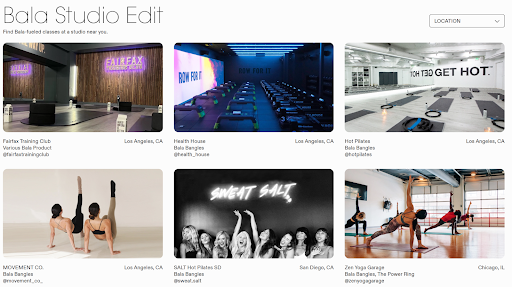
That way, they don’t just get to promote their products. Those who visit those events and like their products may soon turn into brand advocates. Plus, the company gets to build a community around its brand.
Follow the Latest Trends and Take Your Marketing to the Next Level
Your audience keeps changing – and so do the marketing channels and the technology that you can use to reach them.
Today, your customers are more conscious than ever not just about their health, but also about the societal impact of their choices. They want to buy products that offer real health benefits. And they want to buy them from brands they trust.
They want your brand values to align with theirs too. And, once they become your customers, they expect a sense of community and belonging. They’re looking to get to know people who can support them and who are on the same journey.
So, if you want to succeed – you’ve got to embrace the values that are important to your audience. And while not all trends listed may apply to your brand, the core ideas behind them – authenticity, personalization, social impact, and consumer engagement are critical to your brand’s success in 2023.





